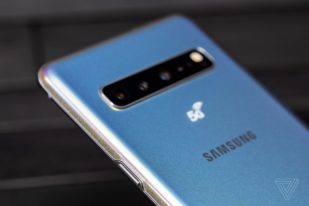AT&T is all in readiness to roll out its first true 5G smartphone, the Samsung S10 5G, on June 17. However, only developers and AT&T business users can get their hands on it and we’ll still have to wait a while for the device’s commercial launch.
The 5G-ready smartphone, which was first launched in May for Verizon users living in the cities where the carrier’s 5G services are available, will be pegged at $999 for AT&T business customers.
Also, the phone will be provided to developers for free in Los Angeles during AT&T’s Shape Conference on July 22.
Today’s announcement hasn’t made any mention of when users will be able to purchase the Samsung S10, or what its cost will be when, or if, it is launched for AT&T users.
There’s a strong possibility that the Samsung Galaxy Note 10 becomes the first 5G-capable smartphone to be made available publically for all AT&T users since it is said to support both the sub-6 spectrum as well as mmWave.
In their announcement, AT&T has mentioned that their business customers and developers who are part of the AT&T developer program will only be able to access the true 5G in “very limited parts, of the carrier’s first lot of 5G coverage.
During the trials of S10 5G in Chicago, it was noticed that the mmWave spectrum on Verizon’s 5G network is fairly limited; however, it is also extremely competent under the right circumstances.
As a result, AT&T certainly needs some beta testers to ensure that it doesn’t step out on the wrong foot.
A few trials, including the one conducted by Chris Welch of The Verge, reported gigabit download speeds, which is destined to make our 4K HD video download experience all the more pleasant.
Until the Galaxy S10 5G is made publically available, the only 5G smartphones AT&T customers can access are the ones carrying the deceptive “5GE” label, which is nothing but just LTE Advanced.
The devices that show the misleading 5GE label include a few Android handsets and the recent iPhones.

